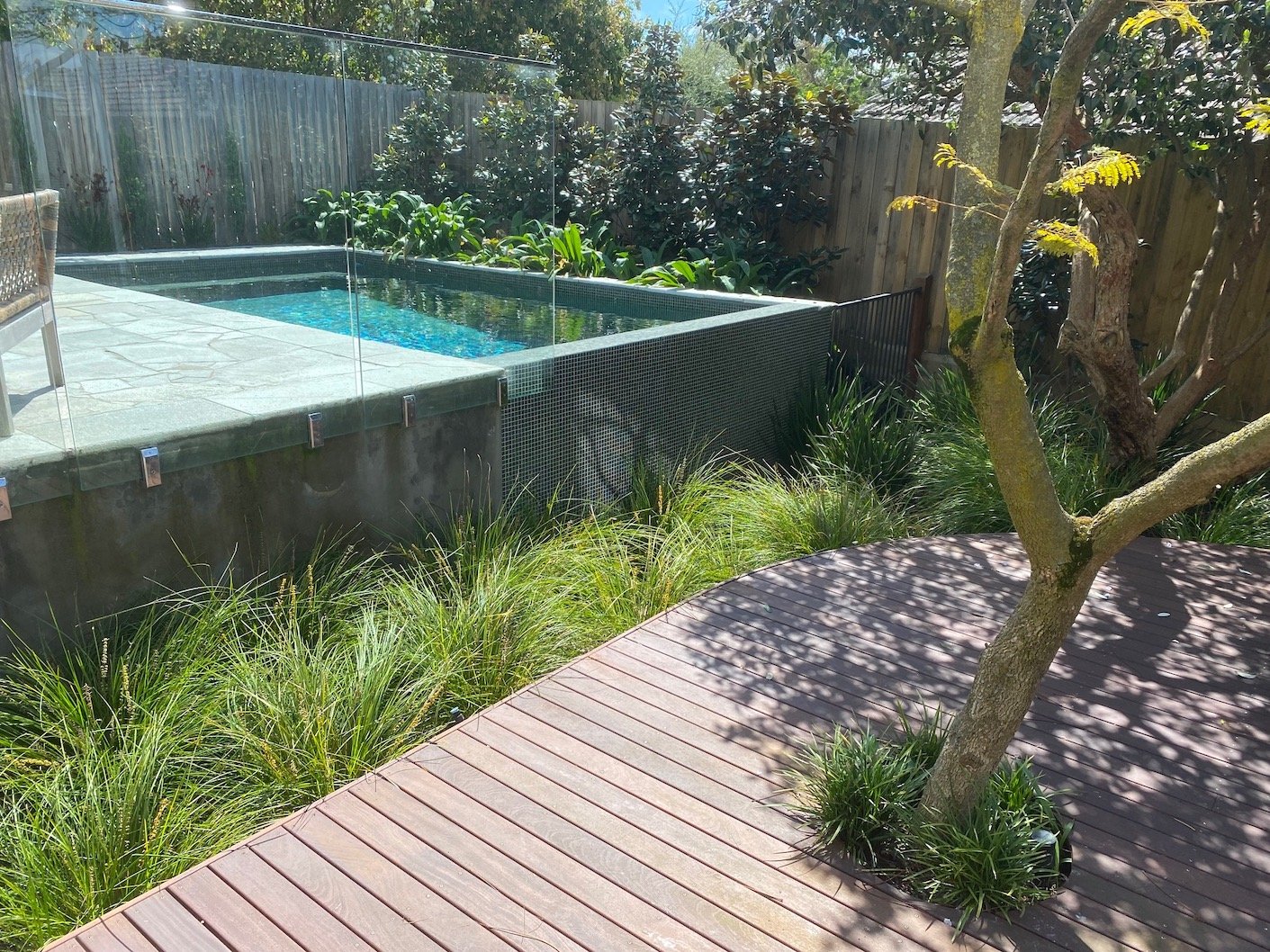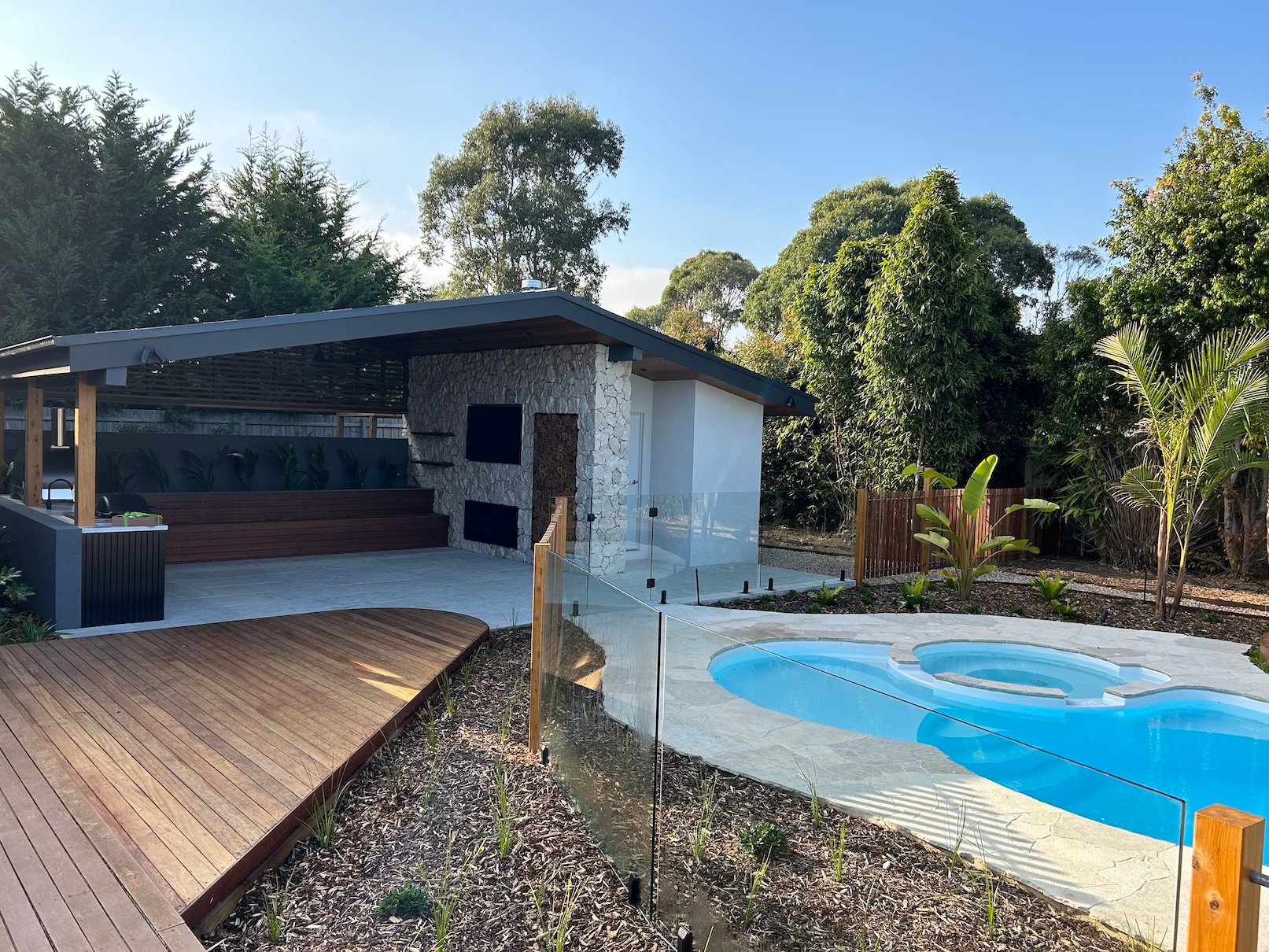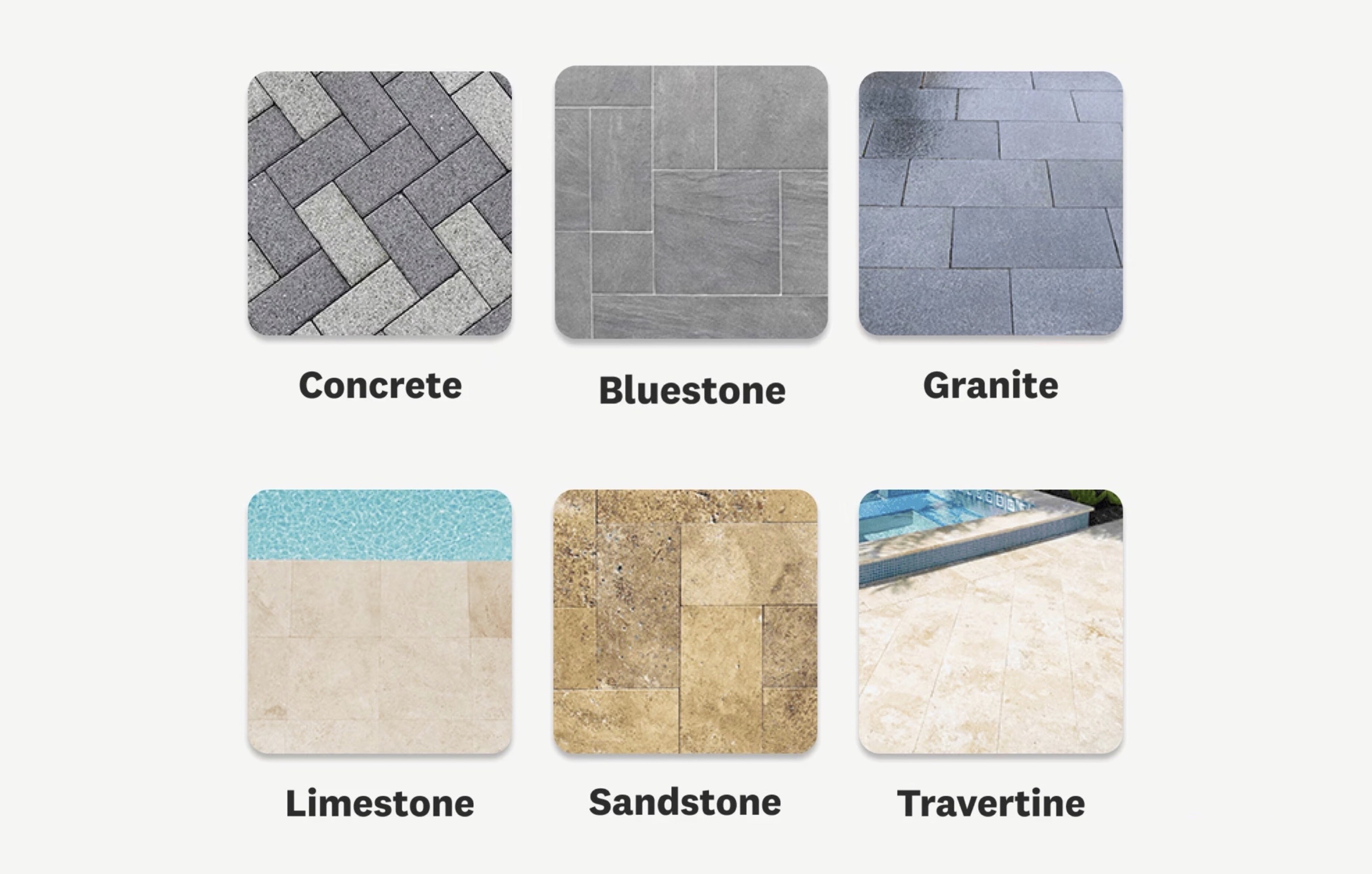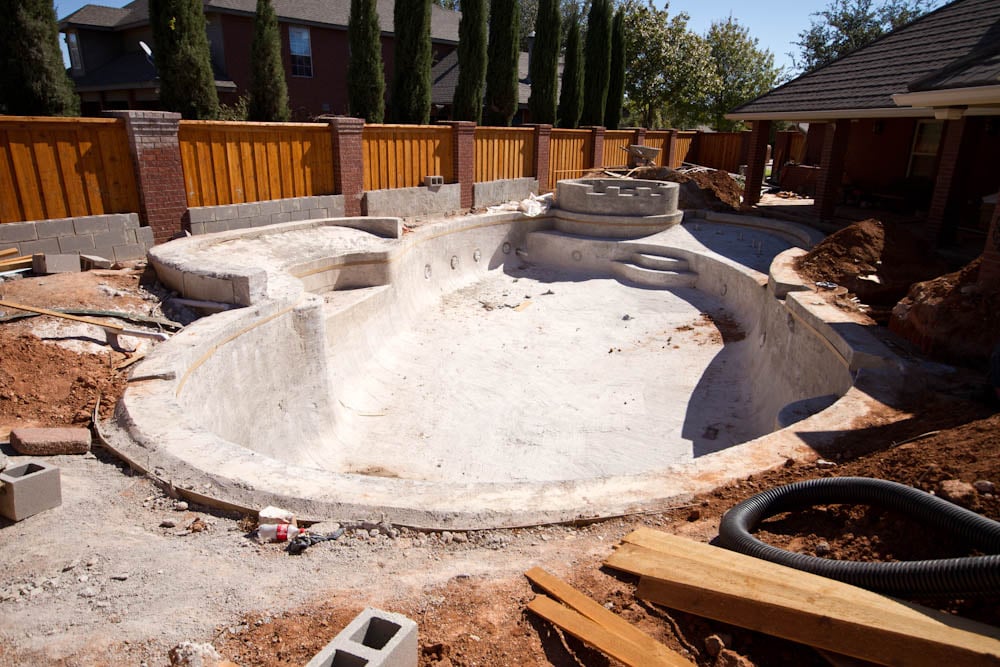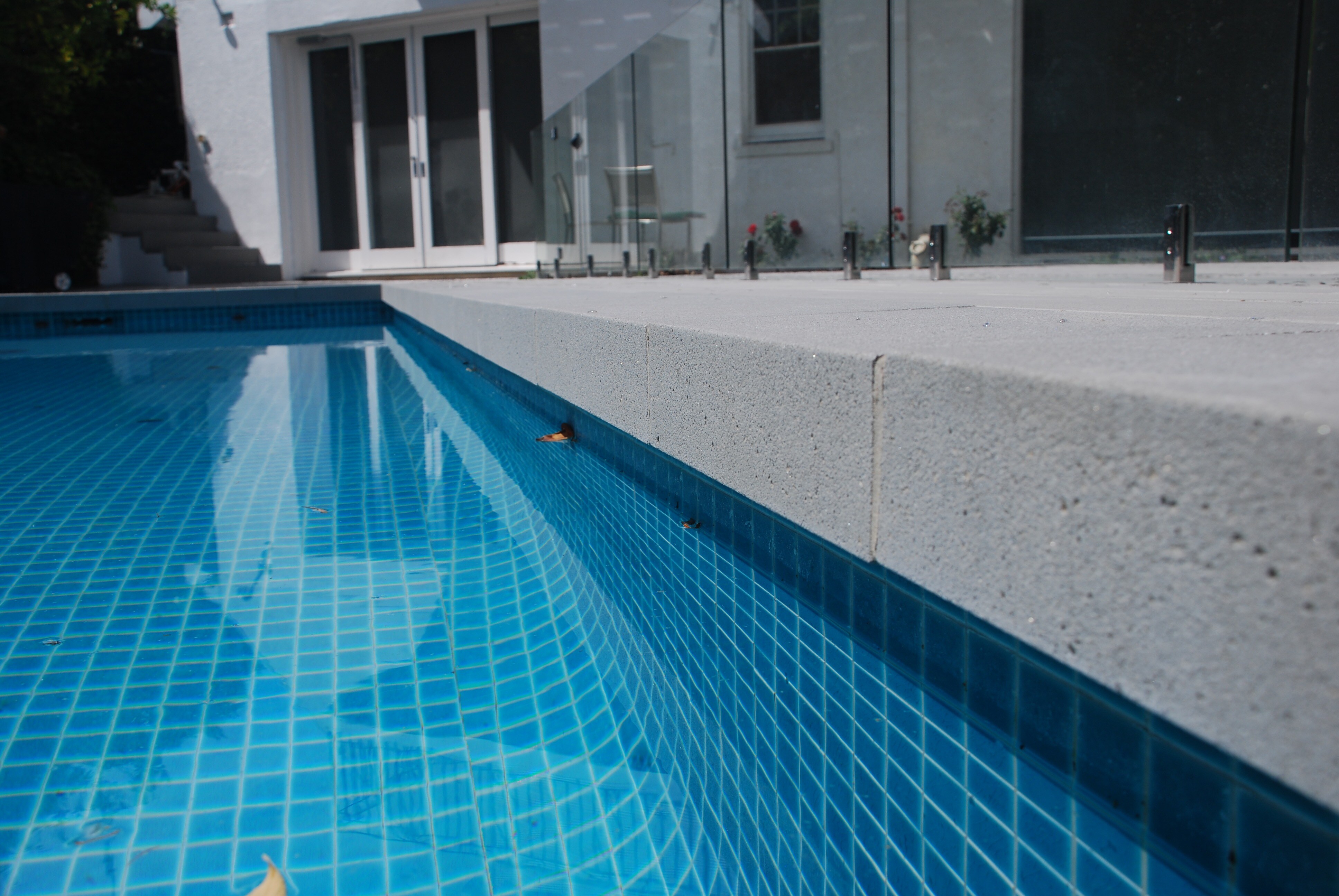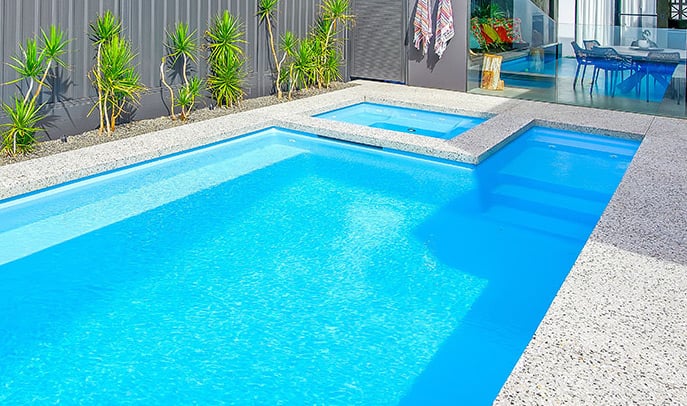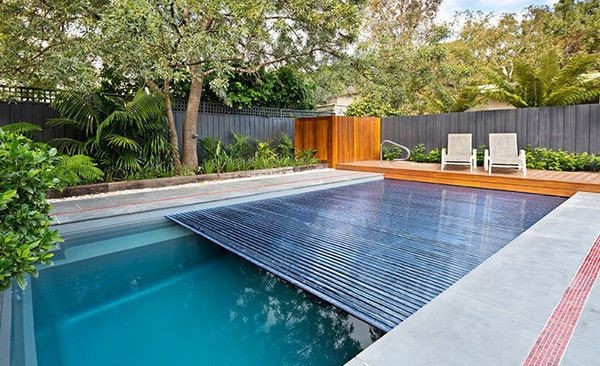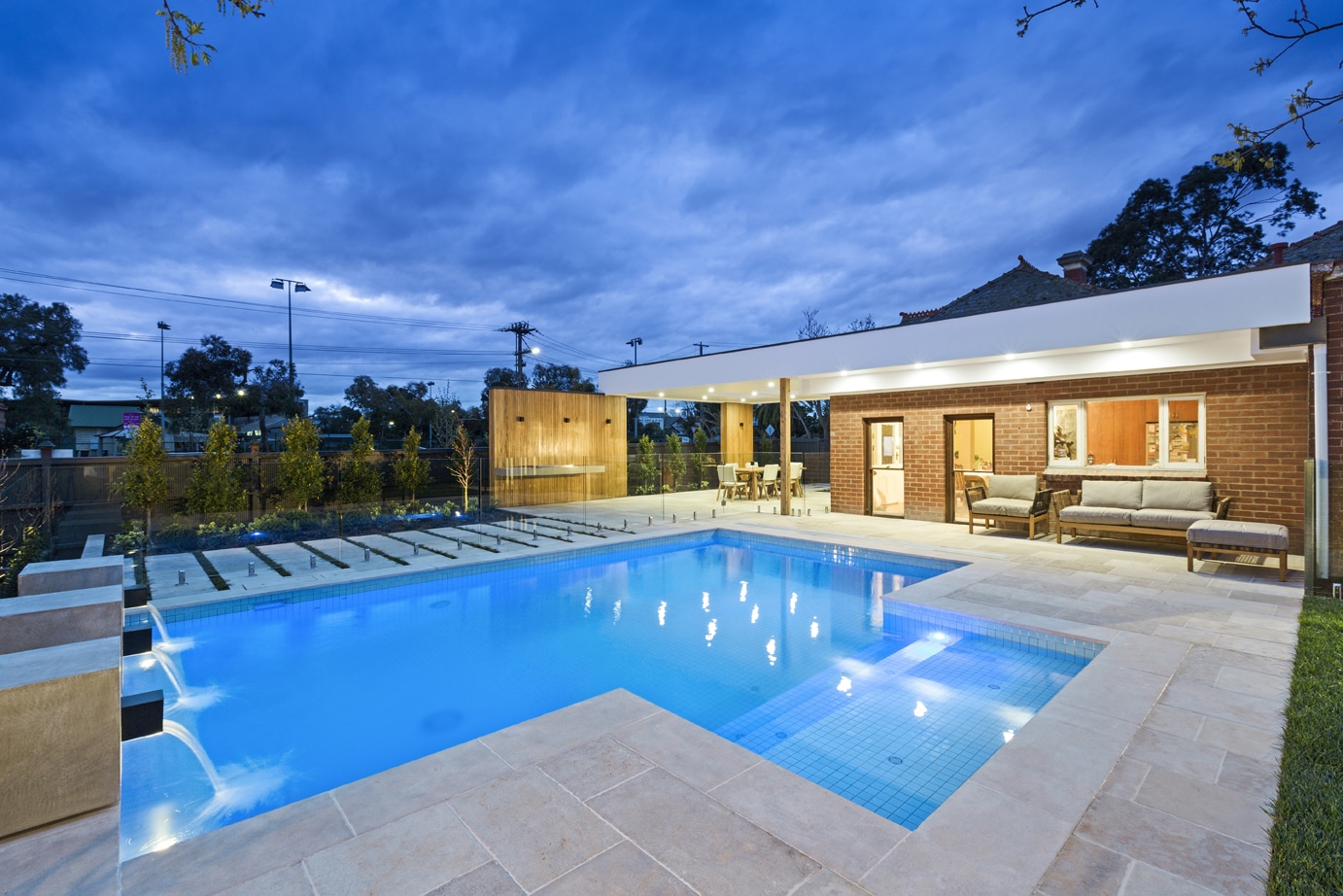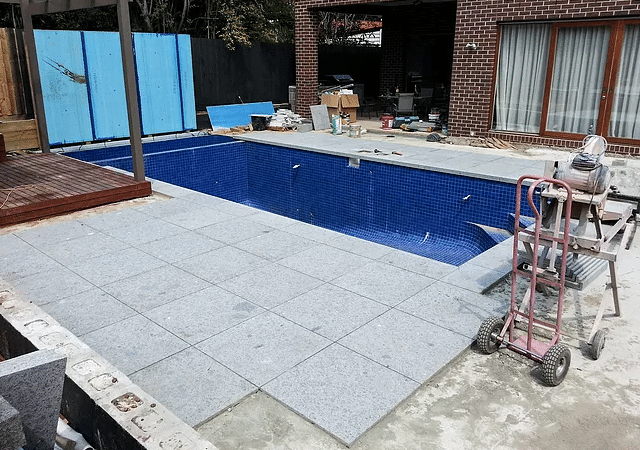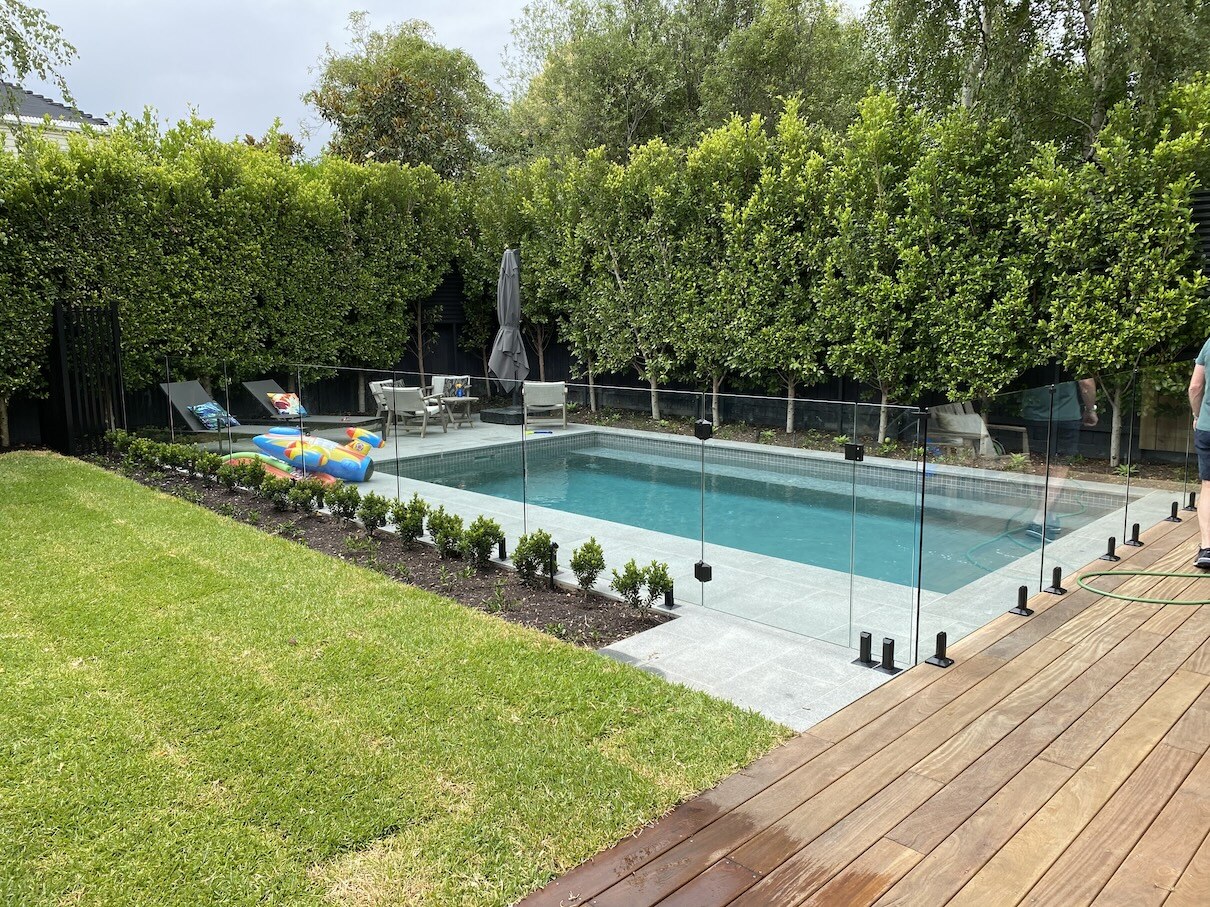
Are you installing a pool in your garden? Do you have existing trees near the planned pool area or are you planning on planting some? Did you know there are pool safety compliance rules that govern which type of trees and other plants are allowed to be planted near pools and pool fences? Would you like to know which trees are more pool-compliant than others?
As landscape designers we're very aware of the very strict rules concerning planting trees and other plants near swimming pools and spas.
In this article, we'd like to share some of our knowledge and experience with you regarding these rules so you can gain a better understanding of the issue. If you're currently planning a pool it's good to know what your plant options might be.
We hope to bring you more clarity on these rules by the time you get to the end.
While a backyard swimming pool is the dream of many families, tragically every year in Australia, many children drown in these pools.
Over the years many rules concerning swimming pools have come into effect to try and reduce these tragedies. (The latest version of these rules came into effect on 1st May 2010.)
The rules exist to ensure that pools and spas are surrounded by fences or other barriers with lockable gates to prevent children from entering the pool area. But there's no point to a pool fence if a child can simply climb a nearby tree to get over the fence and into the pool.
That's why the type of trees that can be planted near pool fences are so closely regulated.
Please note: the guidelines concerning new pools can be different to the guidelines for existing pools so it’s important to clarify exactly which apply to your situation.
Why tree selection near pools is so important
Swimming pool fences must be inspected by a licensed pool safety compliance inspector to ensure they are safe. One of the key compliance checks the inspector makes is evaluating whether children could access the pool by using trees (or other plants or objects) to climb over or down any fence.
For new pools, the regulations governing trees near pool fences state that there must be a minimum gap of 900mm between any tree branch and the top of any internal pool barrier. (Note different guidelines apply to boundary fences)

This gap is referred to as the 'Non-Climbable Zone' or NCZ. This zone must be clear of anything that could provide a foothold for child so as to maintain the effective height of the barrier.
One of the key tests of the safety check is to envisage whether a 25kg child would be able to use the branches of any tree near the fence to climb over it and get into the pool. The inspector looks for any tree branch, intersecting limbs or even stub of a tree branch which would provide a foothold for the child to climb on.
If any of these are present in the NCZ the pool is deemed to be 'non-compliant'.
Also, it’s important to consider the distance away from a pool barrier fence or boundary fence a tree is planted. If trees or plants are more than 900mm away from the fence and can be kept pruned, then they can continue to remain compliant provided their branches remain outside the NCZ.
Which types of trees are considered to be compliant?
In terms of pool safety compliance, trees are classified as either 'climbable' or 'non-climbable'.
Trees that naturally grow thin branches are deemed as 'non-climbable'. Trees that naturally grow thicker branches are classified as 'climbable'. (The difference in classification is determined by the pool inspector.)
Some hedges can also be considered compliant as some hedge varieties grow very thin branches that could not be considered climbable. However, if the type of plant making up the hedge has branches that can interweave with each other to create possible footholds then this might be non-compliant. Vines that grow by interweaving branches strongly together can also be non-compliant.
Where it gets complex is that it’s not just the type of tree that can be classified as compliant or non-compliant, it can also be the way the tree is planted and grows.
For example, many types of trees that are commonly used to create hedges will grow differently depending on how they are planted. If all the same types of trees are planted very closely together so that they grow into a hedge, then the tree will naturally develop very thin weeping-type branches that would not support the weight of a child. However, if the same plant is planted with each tree spaced quite widely apart, they will tend to grow strong branches on each side, that can then provide children with footholds to climb on.
Examples of trees you can plant near swimming pools
Over the years we have planted many trees near swimming pools and pool fences that we know are generally compliant with safety regulations, depending on how they are planted. (However, there can be exceptions so please do not take any of these recommendations as ‘gospel’.)
Here are a couple of examples of plants we generally recommend for planting near pool fences:

BAMBOO is an easy choice for planting near pool fences as it has no branches a child can climb on.
Maintenance is also easy, with little to no trimming required.
However, they can drop a fair number of leaves but this can be easily managed. (We always plant clumping bamboo so it won't spread rapidly.)

PORTUGESE LAUREL – When planted as a hedge, this plant tends to grow very small thin branches so it may comply with regulations. (As previously explained).
It requires only minimal maintenance, with occasional trimming giving you a neat hedge all year round. Its white flowers provide a subtle feature in warmer months.
Other trees to consider for your pool
There are several other plants you could consider for planting outside or inside your pool fence to add some greenery.
The key is to ensure they are non-climbable or planted as a hedge to make them non-climbable.
A few other possibilities for pool-compliant trees are:
- Viburnum 'Awabuki' or 'Dense Fence'
- Callistemon viminalis
- Syzygium 'Backyard Bliss' or 'Hinterland Gold
- Griselinia Broadway Mint
- Elaeocarpus reticulatus (Blueberry Ash)
Naturally small bushy shrubs that grow vertically would never be strong enough to support a child and so these are generally acceptable.
If you would like some other suggestions for plants that can be suitable to plant around pools, we recommend you read this article from Warners Nursery, one of Melbourne’s leading nurseries. 10 plants for poolside planting
How trees can change their compliance status over time
Every tree will grow and change over time. So this can mean it may not always be compliant.
Some specialist varieties of trees listed above may grow in an unusual way that could facilitate a child entering your pool zone.
Also, when you first install your pool and plant your trees, they will tend to be too small and flimsy for any child to climb on. So they will tend to pass inspection for compliance. However as they grow, at some point in the future they may no longer be compliant. At which point you may need to prune them to make them compliant again.
You may have to factor this into your choice of plants for your swimming pool project. (If in doubt talk to your landscape designer or landscaper.)
Here is an example that demonstrates the changing nature of plants and their compliance.
 For this project, we planted Blueberry Ash trees (circled in red) and they were compliant on inspection. However, eventually, they will grow to the height of the gutter of the apartments next door which means they will do a wonderful job of screening out that building for years to come.
For this project, we planted Blueberry Ash trees (circled in red) and they were compliant on inspection. However, eventually, they will grow to the height of the gutter of the apartments next door which means they will do a wonderful job of screening out that building for years to come.
But at some point during their growth, they may become non-compliant and may need some pruning to make them compliant again.
How to use 'pleaching' to be more compliant.
Pleaching trees is the act of removing the lower branches of a tree up to a certain height. This is often done for aesthetic reasons but it can also dramatically improve the chances of your trees being compliant, allowing you to choose other trees from those suggested here.
As you can see in the image below, these pleached trees would stand a higher chance of passing compliance than non-pleached versions of the same trees. Of course, you would always need to check this with your building surveyor who will assess your pool but if you trim any branches off the lower 1.8-2.0m of a tree, it should pass.

How human nature can affect compliance
Always remember that your pool inspector has total authority over whether or not to grant a pool compliance certificate. And they are human beings.
At a recent conference with the CEO of both Landscaping Victoria and SPASA (the Swimming Pool & Spa Association) as well as a member of the Victorian Building Authority, a member of the public asked: "How do you determine if a tree is compliant with regard a pool?" The answer, not surprisingly, was, "Well, it can depend on what the inspector wants to pass."
 We have experienced this ourselves. When we landscaped this garden, the owner advised they wished to leave the back fence around the pool as it was, but replace it later.
We have experienced this ourselves. When we landscaped this garden, the owner advised they wished to leave the back fence around the pool as it was, but replace it later.
When the inspector arrived they were unsure about whether to issue a compliance certificate because they couldn't decide if the ivy could be used to climb down into the pool or not.
So please understand, one inspector may 'interpret' the regulations differently from another and what one inspector will pass, another may not. This is because the words in the regulations are designed to provide “guidance” on issues like whether or not the inspector feels such and such a branch could hold the weight of a 25kg child. Or if anything else could be considered an “aid to climbing”.
The challenges of tree roots & pool pipes
It's important to remember when considering which trees to plant around your pool, that some trees can have very strong root systems.
Pool pipes and tree roots generally do not get along well together. So you must consider where your pool pipes might be when planning your tree planting.
(Normally all these issues are handled by your landscape designer and landscaper IF they are allowed to properly manage the landscaping project.)
However, if you let your pool installer ignore your landscape designer's recommendations and install the pool without consulting with them, there can be real trouble.
Here is an example of this happening to us. On this project in Glen Iris, the pool builder was allowed by the client to install the pool without our supervision.
They placed the pipes so badly we had to make major revisions to the design of the project, at considerable cost to the client who sadly did not understand the consequences of letting the pool builder just go ahead with installing the pool.
The pool installer laid the pipes precisely where we had planned to plant several trees! We had to adjust the planting of the trees but still keep them compliant with the pool safety requirements
A good landscape designer and landscape knows it's vitally important to plant trees only where there will be no damage to underground pipes and cables as well as to keep them within pool safety compliance.
Good planning is the key to success
As you can probably tell by now, there is a lot to know about how trees and other plants close to pools can affect your likelihood of getting a pool compliance certificate.
Remember too that you can’t just consider getting your initial pool compliance certificate because your pool will need to be inspected every 4 years to check whether or not it is STILL compliant. But try to think of compliance being an everyday thing rather than just once every 4 years. Because the purpose of the legislation is to keep pools safe for children, EVERY DAY!
Your landscape designer is aware of all these issues and will design with compliance in mind, but it's good for you to know a bit more about all this so you might better understand their final recommendations to you.
Of course, all of the information in this article is general in nature and should not be construed as specific advice on what to plant in your individual garden or any guarantee that if you choose these plants you will get your pool safety compliance certificate.
If you would like more specific information on your particular pool or would like to organise a pool safety compliance inspection we recommend you talk to Phil at Chordline Pool Barrier Inspections
If we can be of any assistance with any further questions you might have regarding trees and pools, please feel free to contact us by phone or email.
Articles covering Landscape Design and Construction in Melbourne...
Some things your Landscape Designer may not tell you
Pool Coping: What is the right style for your project?
Integrating Your Pool into Your Landscape: A Comprehensive Guide
If you have other questions about a pool project you are considering, why not download our Free Pool Design guide. It answers many of the most common questions people ask and is full of tips and tricks to help you avoid some of the biggest mistakes people make when installing a pool. It will also inspire you with design ideas for your new pool. Click here to download today:
Founder of Whyte Gardens
Topics:

